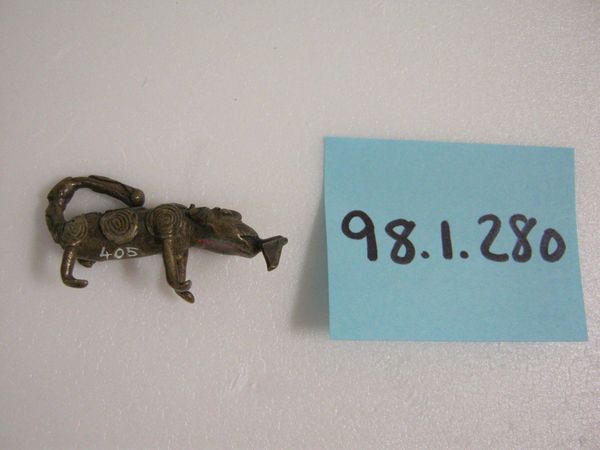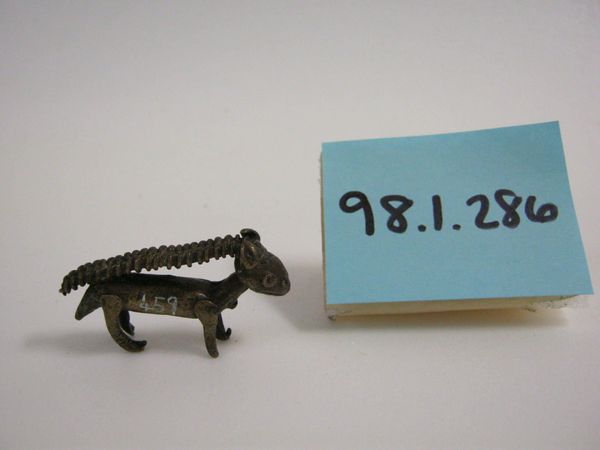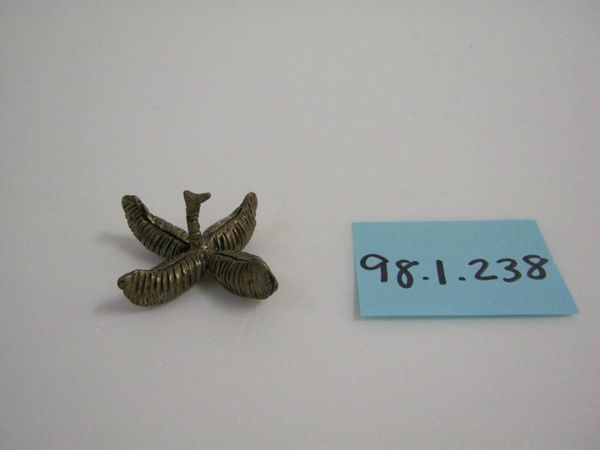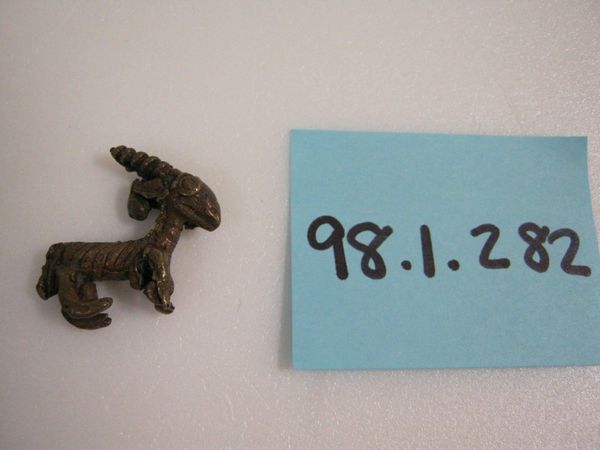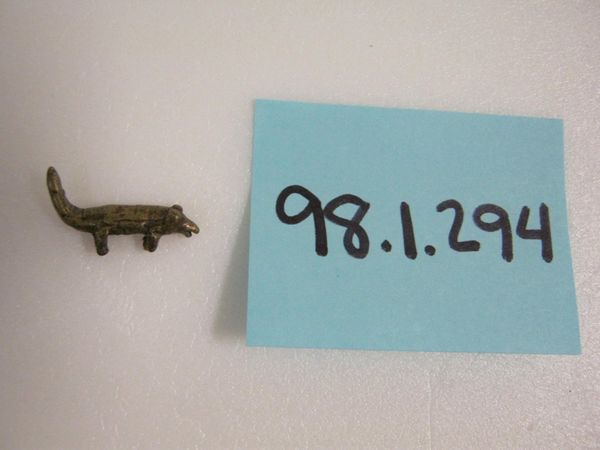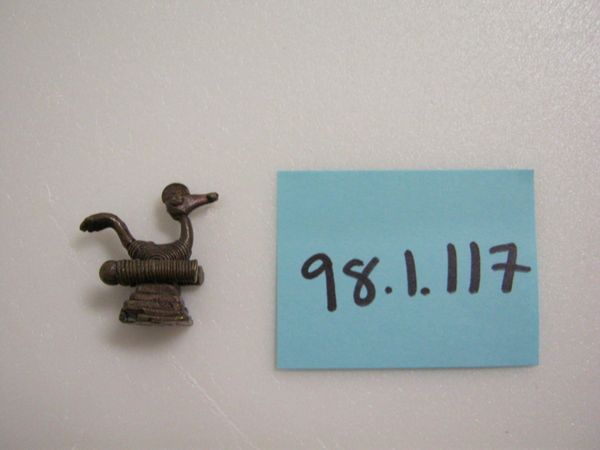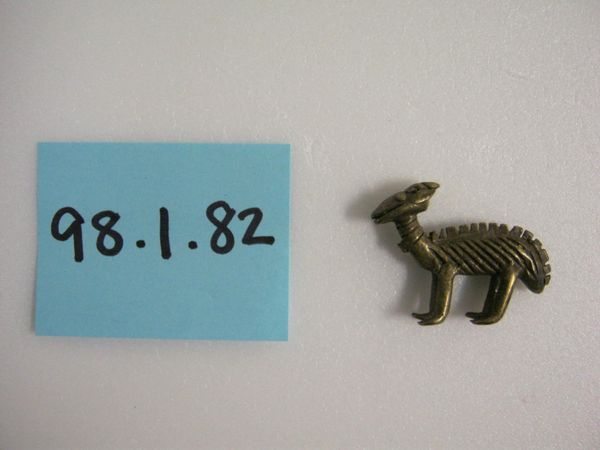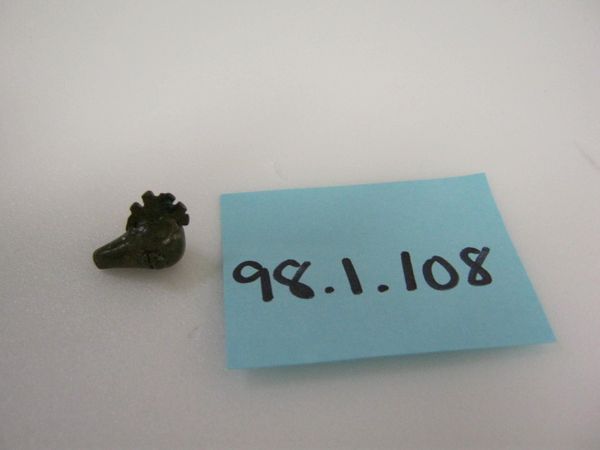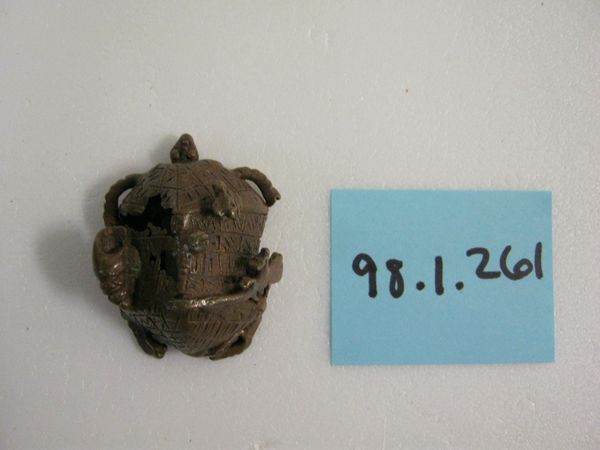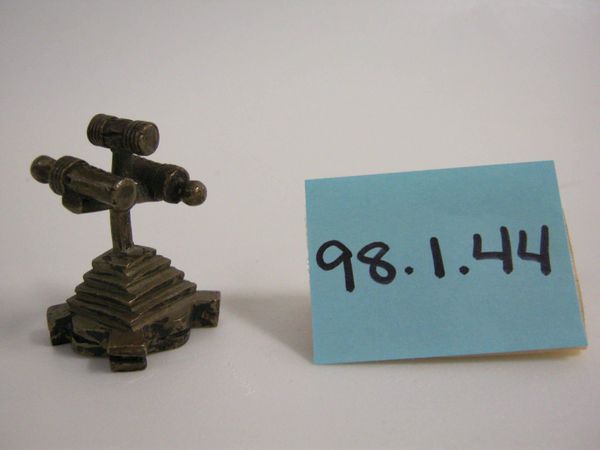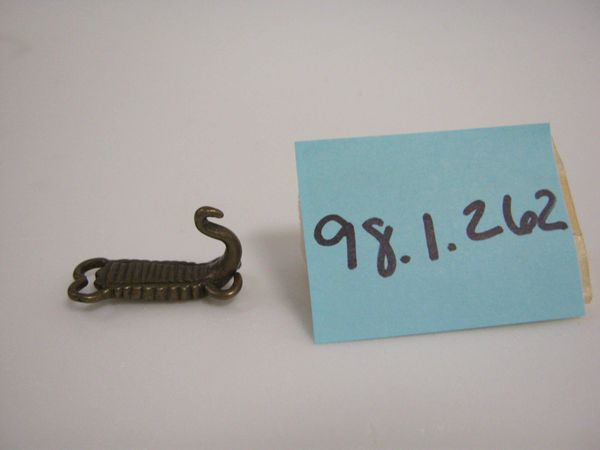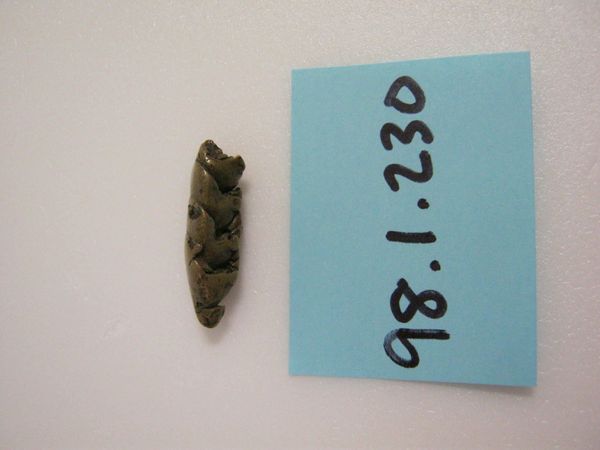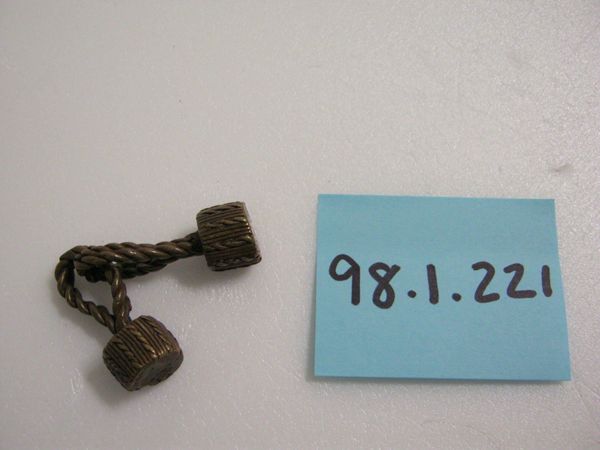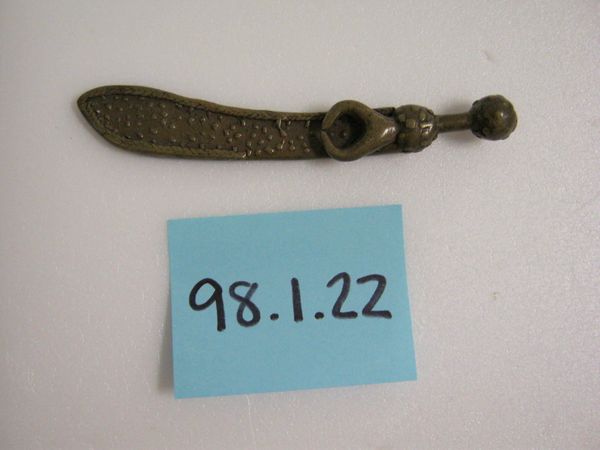![Goldweight [Antelope] by Akan](/_next/image?url=https%3A%2F%2Fd2w8kbdekdi1gv.cloudfront.net%2FeyJidWNrZXQiOiAiYXJ0ZXJhLWltYWdlcy1idWNrZXQiLCAia2V5IjogImFydHdvcmtzLzJjM2Y2ZDhjLWIxZWMtNDRlMS05OTk0LTU5NGUyZjVlMTEzNy8yYzNmNmQ4Yy1iMWVjLTQ0ZTEtOTk5NC01OTRlMmY1ZTExMzdfZnVsbC5qcGciLCAiZWRpdHMiOiB7InJlc2l6ZSI6IHsid2lkdGgiOiAxOTIwLCAiaGVpZ2h0IjogMTkyMCwgImZpdCI6ICJpbnNpZGUifX19&w=3840&q=75)
brass, sculpture
african-art
brass
figuration
sculpture
Dimensions: 1 1/8 x 11/16 x 1 1/2 in. (2.86 x 1.75 x 3.81 cm)
Copyright: Public Domain
Editor: So, this goldweight, an Antelope, is from the Akan people, likely dating from the 19th or 20th century. It’s a small brass sculpture. I’m really struck by the detailed spine; it's so prominent and gives the piece a very specific character. How do you interpret the symbolism inherent in an object like this? Curator: It's fascinating how you’re drawn to the spine. It’s not just decorative; it carries immense cultural weight. Consider the antelope itself, often a symbol of strength, agility, and even sacrifice across various African cultures. But why an antelope cast in brass as a weight? Editor: That's a great question! Is there something specific about goldweights I should consider? Curator: Absolutely. Goldweights weren't merely functional tools for measuring gold dust; they were visual proverbs, reflections of social values, and historical narratives. The image and material combine. Brass itself possesses connotations of wealth and prestige. The antelope depicted would have alluded to proverbs or tales familiar to Akan society. Does that begin to unlock meaning for you? Editor: Yes, definitely. It makes me think about how everyday objects can carry such complex layers of meaning. So, you have a beautiful sculptural object used to measure wealth acting as a memory aid. Now, thinking of it as a sort of portable, symbolic saying changes everything. Curator: Precisely! Visual memory and social cohesion, inextricably linked. It prompts reflection on the permanence of symbolic meaning versus its transformation over time and across cultures. It reminds me to stay inquisitive. Editor: That’s so insightful. I’ll definitely look at objects differently now, thinking about the cultural weight they carry.
Comments
No comments
Be the first to comment and join the conversation on the ultimate creative platform.

